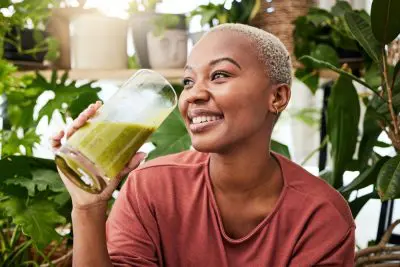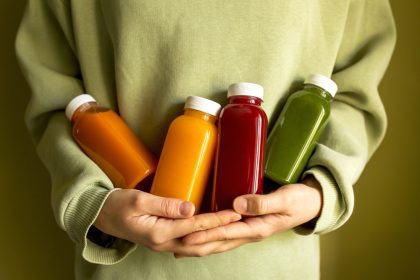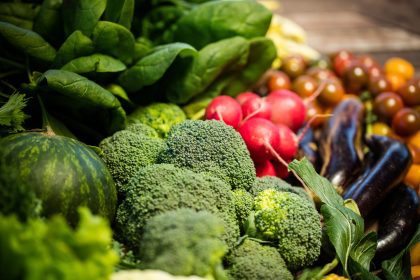We’ve all heard the advice to eat more fruits and vegetables. They’re packed with vitamins, minerals, fiber, and antioxidants that support overall health. But what if some of those seemingly innocent fruits in your kitchen could actually be doing more harm than good? The truth is, how you eat certain fruits matters just as much as which ones you choose.
From timing and ripeness to preparation methods and the parts you consume, these details can transform a nutritious snack into something potentially problematic. Let’s explore seven common fruits that might be causing unexpected issues when eaten incorrectly, and learn how to enjoy them properly for maximum benefits and minimum drawbacks.
1. Unripe jackfruit can wreak havoc on digestion
Jackfruit has gained popularity as a meat substitute thanks to its fibrous texture and ability to absorb flavors. When fully ripe, this tropical fruit offers a sweet, fragrant flesh that’s both delicious and nutritious. However, consuming unripe jackfruit presents several potential problems.
Unripe jackfruit contains high amounts of latex, a sticky substance that can be difficult to digest. This can lead to uncomfortable bloating, gas, and even stomach cramps in sensitive individuals. The latex in jackfruit may also trigger allergic reactions in people with latex allergies, ranging from mild itching to more severe symptoms.
Another concern with unripe jackfruit is its potential to interact with certain medications. The fruit contains compounds that might affect blood clotting, making it potentially problematic for people taking blood-thinning medications. Additionally, its high potassium content could be concerning for those with kidney issues or who take medications affecting potassium levels.
For pregnant women, traditional medicine in some cultures advises against consuming unripe jackfruit due to its warming properties, which some believe could potentially lead to miscarriage. While scientific evidence for this is limited, it’s commonly recommended that pregnant women err on the side of caution.
To enjoy jackfruit safely, make sure it’s fully ripe when eating it as a fruit, indicated by a strong, sweet aroma and slightly soft feel. If using young jackfruit as a meat substitute, purchase commercially prepared products or learn proper preparation techniques to remove excess latex. Always consult with healthcare providers about potential food-medication interactions, especially with foods you don’t consume regularly.
2. Grapefruit and medication can be a dangerous mix
Grapefruit’s tart, refreshing flavor and high vitamin C content make it a popular breakfast choice. Yet this citrus fruit harbors a secret that could make it dangerous for people taking certain medications.
Grapefruit contains compounds called furanocoumarins that inhibit an enzyme in your intestines responsible for breaking down certain medications. When this enzyme can’t do its job, drug levels in your bloodstream can rise to potentially dangerous levels. This isn’t a minor interaction—it can increase drug concentration by 200% or more, effectively turning a normal dose into an overdose.
The list of medications affected by grapefruit is extensive and includes some common prescriptions for cholesterol management, blood pressure, heart rhythm, anxiety, allergies, and pain. Even more concerning, the interaction doesn’t require consuming large amounts or eating the fruit at the same time as taking medication. Even one glass of grapefruit juice can affect drug metabolism for up to 24 hours.
If you take prescription medications, talk to your doctor or pharmacist before consuming grapefruit or its juice. In many cases, you may need to avoid this fruit entirely rather than just adjusting timing. Be aware that other citrus fruits like Seville oranges, pomelos, and tangelos contain similar compounds and may cause the same interactions.
3. Green potatoes contain a natural toxin
While technically a vegetable in culinary terms, potatoes are botanically classified as modified stems called tubers, not fruits. However, their widespread consumption and potential toxicity when improperly handled warrant inclusion in this discussion.
Potatoes exposed to light develop green patches due to increased chlorophyll production. While chlorophyll itself is harmless, this greening process coincides with the production of solanine and chaconine, natural toxins that serve as the potato plant’s defense mechanism against pests and disease.
Consuming green potatoes or those that have begun sprouting can lead to solanine poisoning, with symptoms including nausea, vomiting, diarrhea, headache, and in severe cases, neurological effects. The toxins are particularly concentrated in sprouts, eyes, and green areas.
Proper storage in a cool, dark place helps prevent greening and sprouting. If potatoes do develop small green areas, cutting away those portions generously can remove most of the toxins. However, if a potato is extensively green or tastes bitter, it’s safer to discard it entirely.
4. Rhubarb leaves contain dangerous oxalic acid
Rhubarb stalks make delicious pies and compotes, but the large leaves of this plant contain dangerously high levels of oxalic acid. This compound can cause severe kidney damage, as it forms crystals that can lead to kidney stones and even kidney failure in high doses.
Consuming rhubarb leaves can cause burning in the mouth and throat, difficulty breathing, nausea, vomiting, diarrhea, and in severe cases, seizures and coma. Historically, there have been reports of fatalities from rhubarb leaf consumption, particularly during food shortages when people turned to unusual food sources.
The good news is that the stalks, which are the commonly eaten part of rhubarb, contain much lower levels of oxalic acid and are safe to eat when cooked. Never use the leaves in recipes, and wash the stalks thoroughly to remove any leaf residue before cooking.
5. Unripe lychees linked to deadly outbreaks
Lychees are delicious tropical fruits enjoyed around the world, but unripe lychees have been linked to severe illness and even death, particularly in undernourished children.
Unripe lychees contain hypoglycin A and methylenecyclopropylglycine, toxins that can cause a dramatic drop in blood sugar levels. This effect is particularly dangerous for young children with already low blood sugar due to poor nutrition or fasting. Outbreaks of a mysterious illness in India and Vietnam were eventually linked to children consuming unripe lychees on empty stomachs.
The condition, known as acute encephalopathy syndrome, can cause seizures, coma, and death if not treated promptly. Children affected by this condition typically showed symptoms in the morning after having consumed unripe lychees the previous day without an evening meal.
To enjoy lychees safely, only eat fully ripened fruits, which have a bright red skin and sweet flavor. Avoid consuming large quantities, particularly on an empty stomach, and never eat unripe lychees. Parents should be especially cautious about allowing children to eat these fruits, ensuring they don’t consume them without proper meals.
6. Kidney bean poisoning is real and dangerous
While beans are technically legumes rather than fruits, raw kidney beans deserve mention because their potential toxicity surprises many people. Red kidney beans contain high levels of a lectin called phytohemagglutinin, which can cause severe food poisoning.
Consuming just four or five raw kidney beans can trigger nausea, vomiting, and diarrhea within hours. The poisoning, while rarely life-threatening, can cause extreme discomfort with symptoms similar to severe gastroenteritis. White kidney beans and other varieties contain the same toxin but in lower amounts.
Proper cooking neutralizes this lectin completely. Kidney beans should be soaked for at least five hours and then boiled at a high temperature for at least 30 minutes. Slow cookers are particularly problematic for kidney bean preparation, as they may not reach temperatures high enough to destroy the toxin. Canned kidney beans have already been properly processed and are safe to consume after rinsing.
7. Almonds can contain cyanide compounds
Though commonly thought of as nuts, almonds are botanically the seeds of fruits related to peaches and apricots. While the sweet almonds commonly sold in stores are safe to eat, bitter almonds contain significant amounts of amygdalin, which breaks down into cyanide when consumed.
Eating just a few dozen bitter almonds can be lethal for adults, with children at risk from smaller amounts. Symptoms of cyanide poisoning include headache, dizziness, confusion, anxiety, nausea, vomiting, increased heart rate, increased breathing rate, restlessness, and in severe cases, respiratory failure leading to death.
In the United States, bitter almonds cannot be sold for consumption, and sweet almonds pose no cyanide risk. However, in some countries, bitter almonds may be available in markets, particularly for use in certain traditional recipes where cooking denatures the toxin. If you’re traveling internationally or purchasing almonds from specialty markets, ensure you’re buying sweet varieties for raw consumption.
Eating fruit safely for maximum benefits
Despite these potential hazards, fruits remain an essential part of a healthy diet. The key is knowing how to select, prepare, and consume them properly to maximize benefits while avoiding risks.
Always wash fruits thoroughly before eating, even those with peels you don’t consume. This helps remove pesticide residues, bacteria, and other contaminants from the surface. For fruits with edible peels, consider using a produce wash or a solution of vinegar and water for more thorough cleaning.
Pay attention to ripeness, as this affects not just flavor but safety. Some fruits, like lychees, should never be consumed unripe, while others, like bananas with brown spots, may offer increased antioxidant content despite being less visually appealing.
Store fruits properly to prevent spoilage and toxin development. Different fruits have different storage requirements—some ripen better at room temperature, while others need refrigeration to maintain freshness and safety.
Be mindful of potential drug interactions if you take medications. Besides grapefruit, other fruits like Seville oranges, pomelos, and star fruit can affect medication metabolism. Always check with healthcare providers about potential interactions.
Consider your individual health conditions when choosing fruits. Those with kidney issues might need to limit fruits high in oxalates or potassium, while people with diabetes might need to be mindful of very sweet fruits like mangoes and grapes.
By following these guidelines and being aware of the specific concerns with the fruits mentioned above, you can safely enjoy the tremendous nutritional benefits fruits offer while avoiding potential pitfalls. Remember, most problems occur not from eating fruits in general, but from consuming them in the wrong way or in the wrong state of ripeness.
















